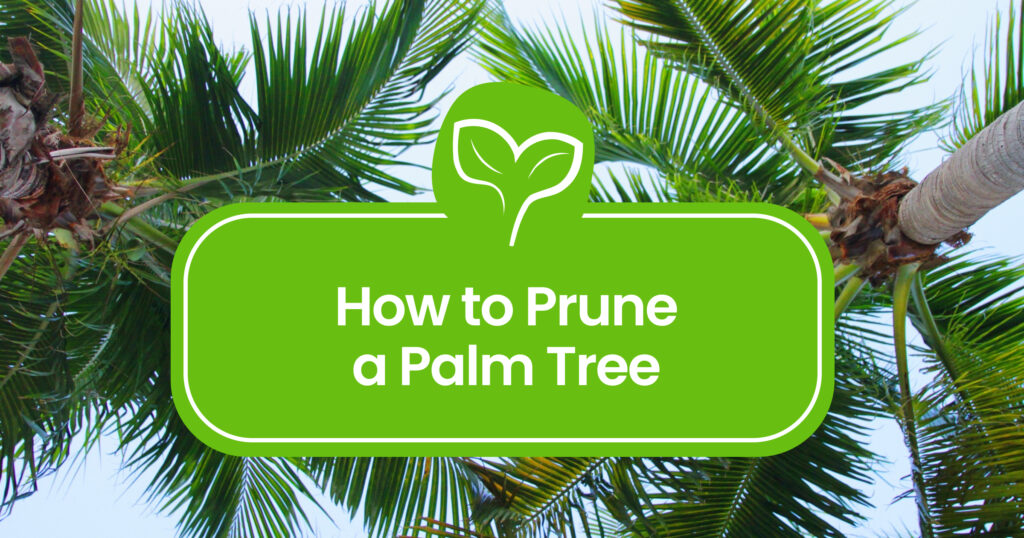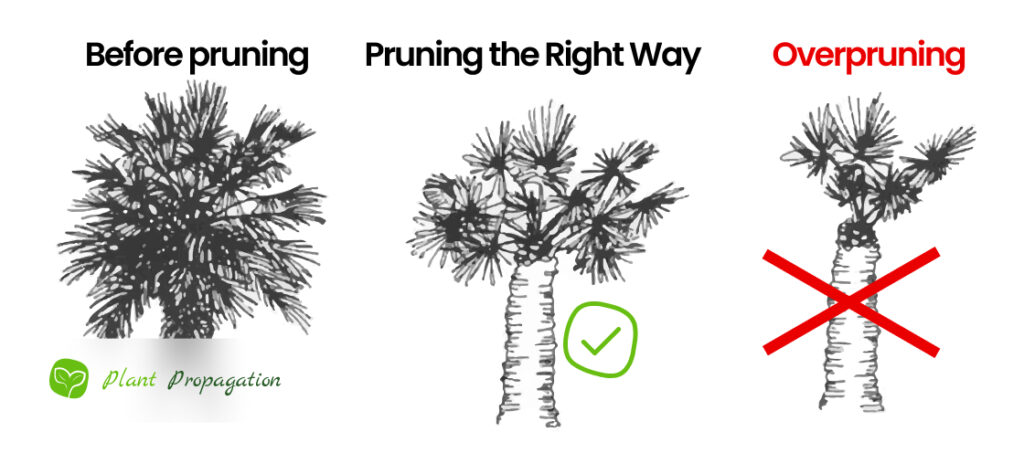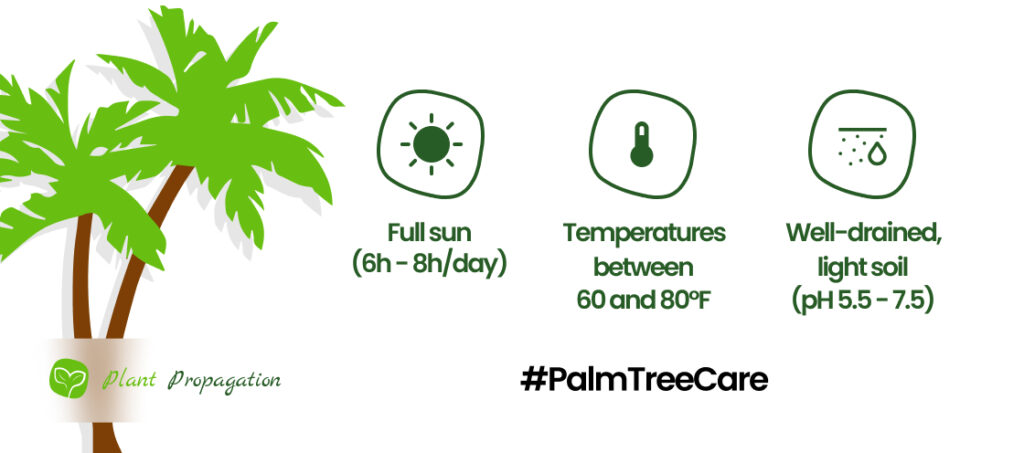
Ever wondered when to give those majestic palm trees a trim? It’s a bit of an art, knowing when and how to wield those shears. Welcome to the ultimate guide on How to Prune a Palm Tree the right way.
Discover the signs that signal it’s time for a trim, the seasons when your palms need a little TLC, and the essential tools to get the job done like a pro. From the step-by-step process to nurturing your palms post-prune, let’s embark on a journey to ensure your palm trees not only look stunning but thrive in their lush glory.
When to Prune Palm Trees
Now, when’s the best time to get your pruning game on? Before diving into pruning, let’s figure out if it’s truly necessary. Remember, less pruning is often better for your palm’s health!
Signs it is time for Pruning
- Dead or Dying Fronds: Check for fronds that look lifeless, brownish, yellow, or hanging down. These are clear signs it’s time for a trim.
- Safety First: If fronds near buildings or driveways pose a fire hazard or hinder visibility, it’s wise to trim them for safety reasons.
- Protect from Wind: High winds can cause fronds to become potential hazards. Trimming can prevent damage to your property during such conditions.
- Fruit, Seeds, or Flowers: Sometimes, removing fruit, seeds, or flowers helps the tree grow better.
When Not to Prune a Palm Tree
Pruning isn’t a ‘one-size-fits-all-year-round’ deal. Seasons matter, and there are times when your palm’s saying, “Hands-off, please!” Long story short: you should not prune after late fall or during winter.
Best Time to Prune Palm Trees
Late spring and early summer is the go-to season for palm pruning. Remember, pruning purely for looks might harm your tree, so it’s best to avoid it unless necessary.
Tools You’ll Need
-
Serrated Knife:
- Perfect for fronds less than 1 inch thick and nifty for removing flower stalks.
-
Large Clippers or Pruning Shears:
- Ideal for slightly larger fronds, around or over 1 inch in diameter.
-
Hand Saw or Pruning Saw:
- A go-to for thicker, larger fronds that need a bit more muscle to remove.
-
Chainsaw (for heavy-duty tasks):
- Use it for those very thick fronds, but with great caution. Safety first!

How to Prune a Palm Tree Step-by-Step
Let’s get hands-on now! We’re breaking down the pruning process, step by step.
-
Select & Prepare the Right Tools:
- Choose tools based on the tree’s size: for smaller palm trees, Prunin Shears are great, but for larger ones, you are going to need Pruning Saws or a Chainsaw.
- Make sure all of your tools are sterile and sharp. Bleach-water solution is always a go-to for this.
-
Removing Dead or Damaged Leaves:
- Identify and cut dead or broken fronds 2 inches from the trunk, but keep at least two rows of mature fronds intact.
- Avoid pruning green fronds above a horizontal line parallel to the ground.
-
Handle Petioles and Flowers:
- Gently remove loose petioles (the stem of a palm frond).
- Prune developing fruit and flowers to save the tree’s energy and prevent hazards.
-
Clean Up:
- Discard pruned fronds and debris in designated organic waste bins.
- Remove fallen fruit, seeds, or flowers to prevent pest attraction.
After this, the most important thing is to Wait Before Pruning Again: Allow at least a year before the next trim to make sure your palm is healthy and strong. You should avoid removing more leaves in a year than the tree can naturally grow.

Aftercare
After prunign your palm trees, aftercare plays a large part of quick recovery. Now, let’s keep them in tip-top shape with some easy aftercare tips:
- Watering: Water those palms right after trimming to help them bounce back. Add a bit of fertilizer to give them a nutrient boost, but don’t go overboard!
- Monitor your Palm Tree: Watch out for pests or diseases and sort them pronto if spotted. Regular snips here and there to remove dead bits – it keeps the tree feeling fresh.
- Keep it Sheltered: Keep the tree’s area tidy; clean space means happy palms. Cover them up if harsh weather’s on the horizon.

Conclusion
There you have it, palm enthusiasts! Pruning your majestic palm trees isn’t just about shears and snips; it’s a delicate balance of timing and technique. Remember:
- Timing is Crucial: Recognize the signs that signal pruning is necessary and embrace the right seasons for your palms’ sake.
- Tools of the Trade: Choose wisely; the right tools ensure a clean, healthy trim.
- Care is Key: Post-trim care ensures your palms thrive. Water, monitor for pests, and keep them sheltered.
With this guide, your palm trees are set to flourish—balanced, healthy, and vibrant in every leafy detail!
Frequently Asked Questions
How often do palm trees need to be trimmed
Typically, you’d want to give it a trim once or twice a year. Focus on the older fronds when pruning. Yep, it’s about saying goodbye to the old to make way for the new growth. But here’s the catch – too much pruning in anticipation of future growth? That might spell trouble for your tree. Remember, a balanced trim keeps your palm happy without the risk of overdoing it!
Should you cut off dead palm branches?
Cutting of dead palm branches will help your tree to focus its energy on healthy growth. You should always prune any diseased, dry or dead branches.
Should I cut the brown tips off my palm tree?
First, you should always check if you can heal the leaves by watering or adjusting the amount of sunlight the tree gets. If there is nothing you can do, cutting of these brown tips is okay. But remember, pruning always puts some stress on your tree.

